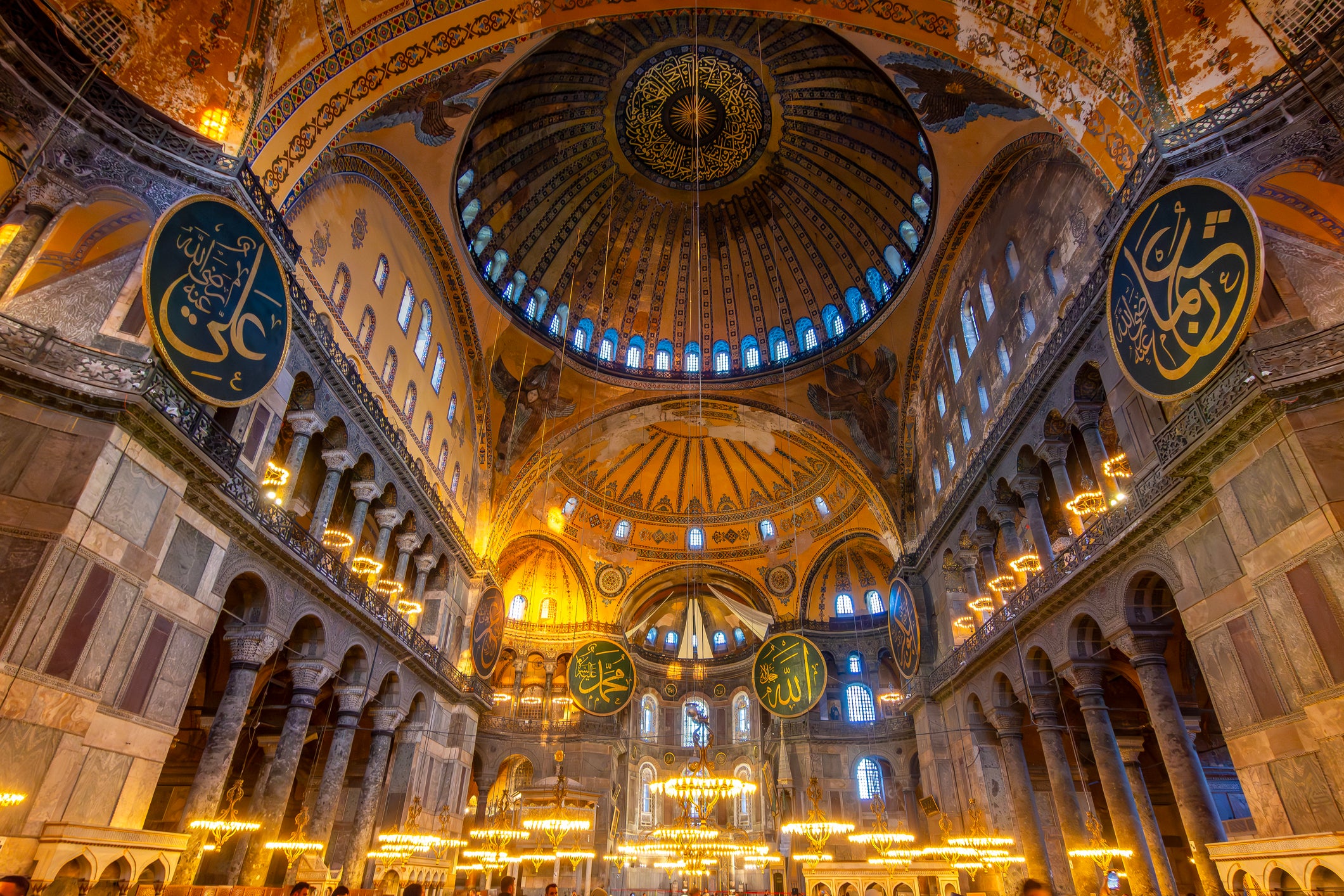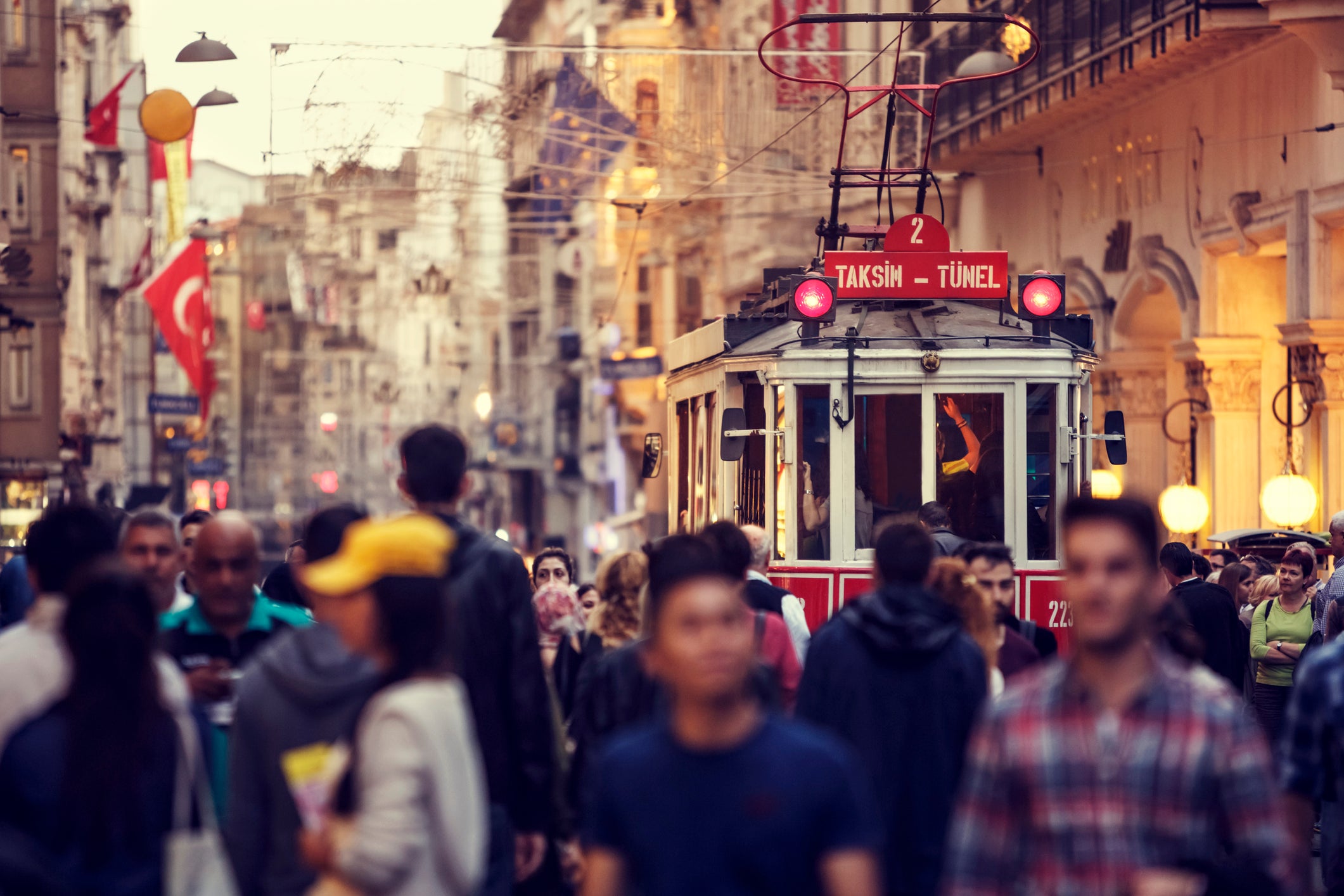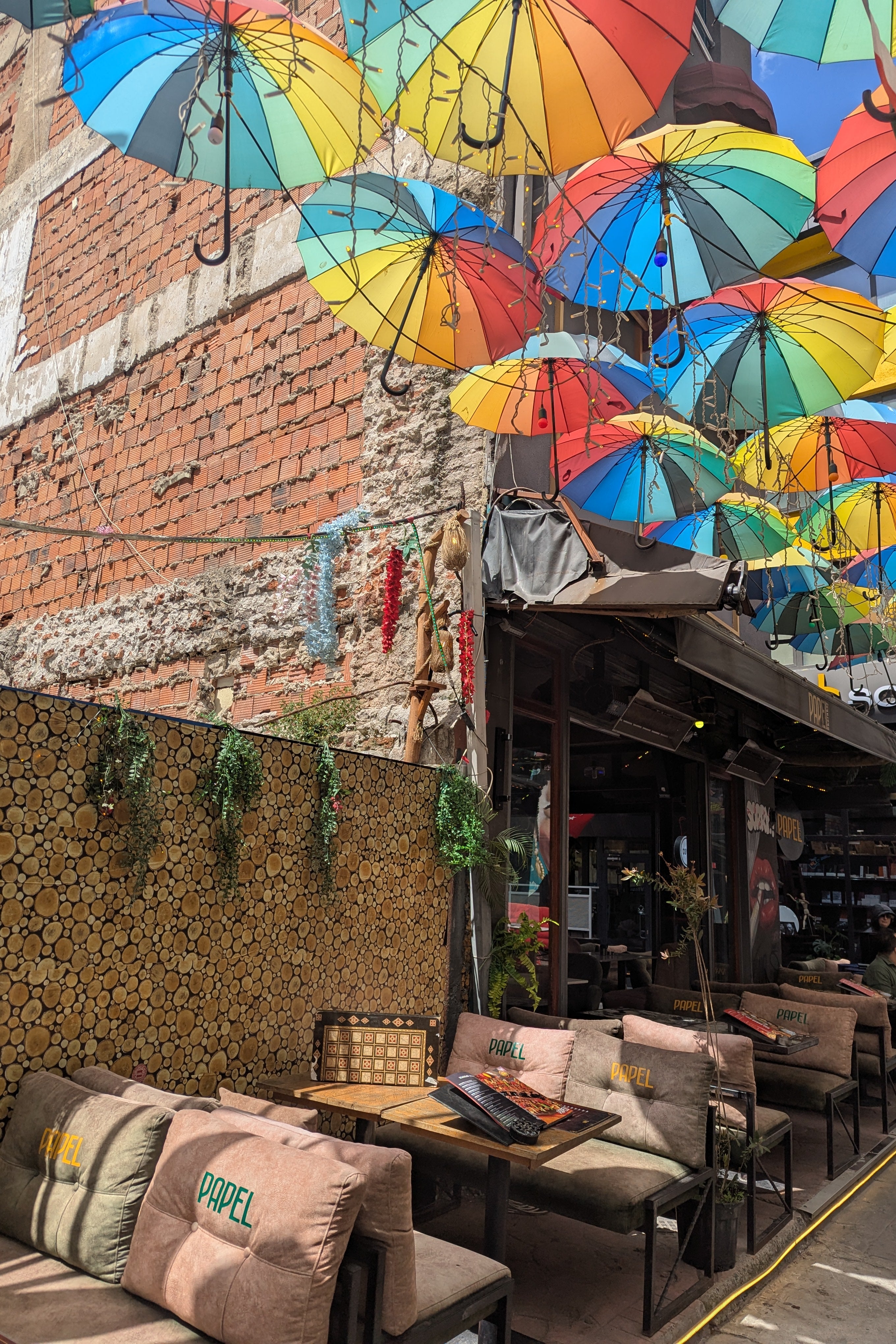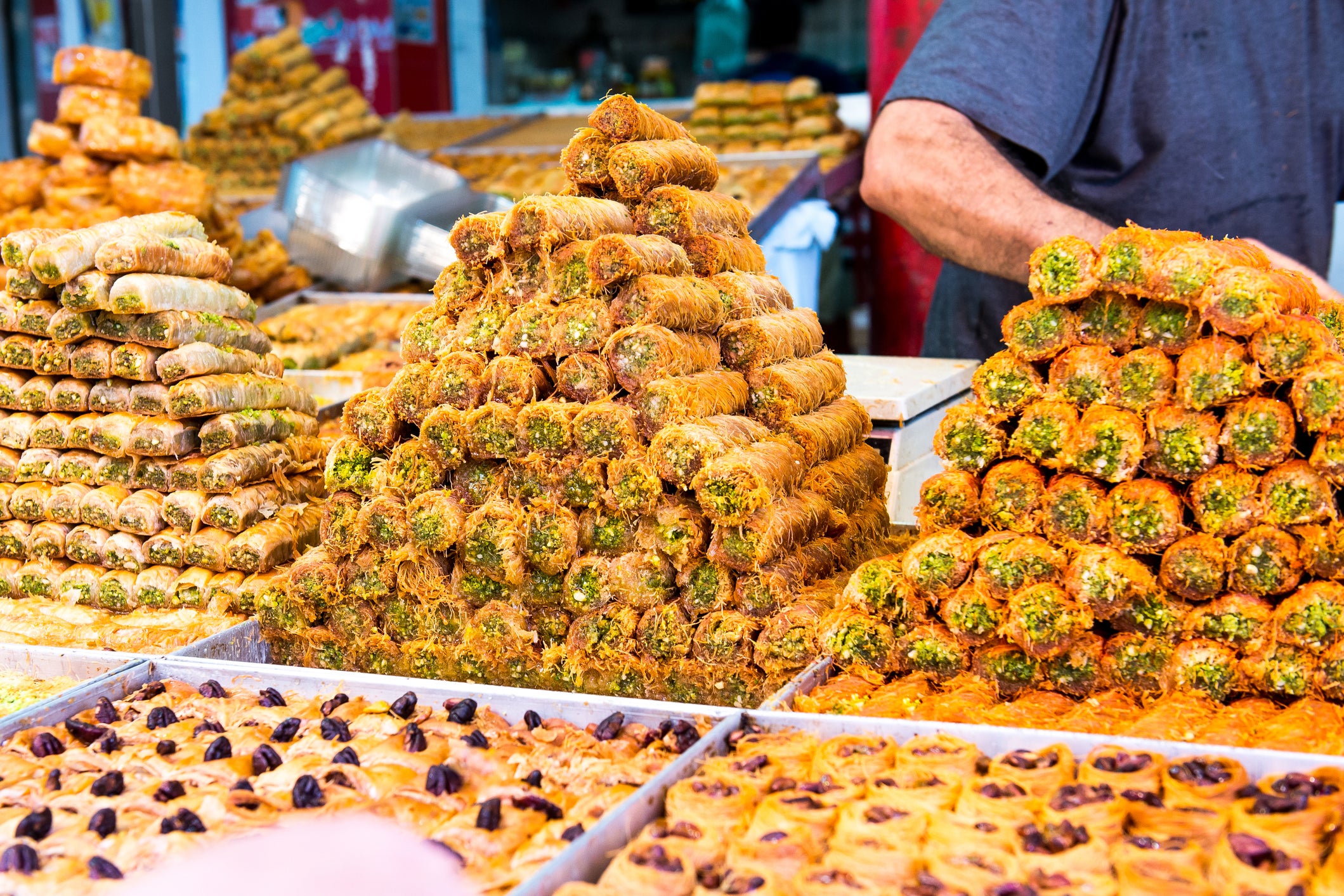
I hadn’t tipped Montreal Shot Bar in Istanbul as the place I’d learn the art of traditional Kurdish dance. But there I was, two Efes beers deep, hand in hand with a local waiter, trying not to out myself as what I am: a fully-fledged dancephobe.
Under normal circumstances, I’m allergic to dancing. As a child, I’d run screaming from any kids' club that played the Macarena like it was an air raid siren; I never mastered the Cha Cha Slide or S Club 7 dance routines, and don’t get me started on Tube Girl.
But this wasn’t London’s Be At One, this was a city on the precipice, where cultures collide, politics clash, and religions weave together. A place constantly straddling two worlds: the perfect arena in which to let my alter ego feel the wind in her hair, if only for a night.

Read more: Turkey's best-kept secret lies in its northeast playground of perfect snow
When I visited Istanbul at the end of April this year, it was in a state of turmoil, just after the mass protests following the arrest of the city’s mayor, Ekrem İmamoğlu – at the time the primary opposition candidate to Turkey’s right-wing populist leader Recep Tayyip Erdoğan – and before hundreds more left-wing protestors were arrested during May Day demonstrations. The city had also just suffered a 6.2 magnitude earthquake.
I was uneasy about visiting while the country was in a state of flux, but I wanted to see the city between the headlines. On my arrival, the only signs of aftershock – or the oncoming wave of unrest – was the visible police presence dotted around Taksim Square and on Istiklal Caddesi, one of the city’s most famous pedestrianised shopping streets. The city’s day-to-day rhythm remained unchanged: men drank Boza (a fermented high-protein drink made from grains) on the kerbside; imams from neighbouring mosques harmonised calls to prayer and street-smart teenagers watched football matches from public viewpoints overlooking Beşiktaş Stadium.
Read more: The resort town where you can find Maldives-like winter sun closer to home
Like most first-time tourists to the city, I headed to Hagia Sofia – the Christian Orthodox Church turned mosque found in Sultanahmet Square (£20 for visitors or free for Muslims and Turkish citizens.) First consecrated in 360 CE, it was transformed into an Islamic place of worship after Ottoman Sultan Mehmed II conquered the city formerly known as Constantinople in 1453. It became a museum in 1934 before being converted back into a mosque in 2020. Today, it’s designated a Unesco World Heritage Site and around 50,000 Christians, Muslims and nonbelievers alike pilgrimage to the site every day.

I found it to be a beautiful confusion, with its famed domed roof sheltering murals of Christ poking out behind calligraphed panels inscribed with the Prophet Mohammed’s name. Though for me, it was the New Mosque, ironically built between 1597 and 1665, that had the real wow factor. Maybe it’s because it doesn’t attract the crowds of its sister site or because I'm a sucker for Iznik tiles, but it’s there, draped in a chador hastily bought at the local gift shop to hide my leopard print tunic and Celtic knees, that I felt I got a snapshot of the Istanbul of old.
Read more: The best Turkey holiday destinations – and when to travel to each one
I learned more about the city’s frenetic religious tapestry at Church of St. Anthony of Padua, Istanbul’s largest Catholic church. Most notably, it claims Pope John XXIII as its own, referring to him as “The Turkish Pope” because of his close relationship with this parish. When I stepped inside in the days following Pope Francis’ passing, Catholics lined up to write tributes in a book of remembrance; one, a teenager wearing a hoodie with the slogan “I haven’t lost my virginity because I don’t lose” on the back. Oddly, I think the late pontiff would have approved.
To dig deeper into the city’s history, pre-hair transplant tourists (the follically-challenged flock to the country in their millions each year), I visited the Istanbul Archaeological Museums, three buildings made up of the Museum of the Ancient Orient, the Archaeology Museum and the Tiled Pavilion, which tell of Turkey’s history across different eras and empires. Highlights included the Ishtar gate of ancient Babylon, the Kadesh Treaty, which is widely considered to be the oldest peace treaty in the world, and its most well-known excavation, Alexander Sarcophagus, a stone coffin depicting Alexander the Great’s Persian conquests, which is in part still stained with its original red colour from the 4th-century BC.

In terms of the city’s culinary and culture scene, a surprising amount of it takes place in former banks, which my guide Alim explains with a quip: “It wasn’t as if we were using them for anything else.” The old headquarters of Ottoman Bank is now home to a two Michelin-starred restaurant, Neolokal, which boasts a traditional-meets-modern Anatolian menu of local and seasonal ingredients.
On my visit, I tried the restaurant’s six-course tasting menu, which featured its staple sourdough bread with rainbow-coloured hummus, vegetable kadinbudu, grilled cauliflower and oyster mushrooms, followed by a pistachio and hazelnut baklava made with sheep’s milk. The selection of Turkish wines stole the show, though, with Kavaklıdere Ancyra Öküzgözü (velvety, cedar-toned) taking the crown from Romania’s Fetească Neagră as my favourite underrated red.
Read more:The winter sun escape perfect for family wellness this winter
As for the Beyoğlu branch of Türkiye İş Bankası (one of the first banks to open in the Republic of Türkiye), it’s now İşbank Painting Sculpture Museum, a six-storey space dedicated to showcasing the evolution of Turkish painting. It opened in October 2024 to house over 600 works by renowned Ottoman painters such as Osman Hamdi Bey (The Tortoise Trainer, 1906) and Hoca Ali Rıza (The Red House, 1920). The restored staircase is an artistic and architectural wonder in and of itself.
With a woman in a chainsaw shop standing in for Citymapper, I also found my way to Eminönü port, where I left the hedonism of the Western world behind. Istanbul is the only city in the world to span two continents, and I hopped between Europe and Asia on the public ferry in just 20 minutes – unashamedly casting myself in one of the many spy thrillers (Skyfall, Tinker, Tailor Soldier Spy, The Amateur) that have used the Golden Horn as a backdrop.

Tickets cost less than £1 (Most sightseeing trips cost around £30), and I enjoyed an unofficial tour of the city’s sites, including the Galata Tower, Bosphorus Bridge and the Blue Mosque, before arriving in the ‘burbs, which have residential charm and an alfresco coffee culture I can get behind. I embraced the city’s Asian influences by learning to roll and pinch pastry into manti (Turkish dumplings) under the watchful eye of chef Şafak Erten, and enjoyed a Turkish bath, which I can best describe as part baptism, part human sacrifice.
By the time I headed for the airport, I had just about got used to the whiplash caused by Istanbul’s streets, sites and isms: the stray cats being treated as VIPs; the country’s foremost rockstar being geriatric historian Ilber Ortaylione; the reclamation and change rooted in its DNA. Then fresh May Day protests start to rumble, and I felt the city’s edges blur again, the memory of me on the dancefloor being lost to the tremors. Montreal Shot Bar? Never heard of it.
Jessica was a guest of The Turkish Ministry of Culture and Tourism.
How to get there
Turkish Airlines operates approximately seven daily direct flights between London and Istanbul. A one-way economy flight starts from £115pp. Flight time is around 4 hours.
Where to stay
The Marmara Pera is an affordable hotel near the hustle and bustle of the city’s main attractions.
For a more luxurious stay head for The Four Seasons Bosphorus.







